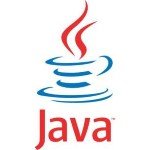-
Enterprise Java

Asynchronous CDI Events
Few days ago, during our regular code review, one of my colleagues raised a question what would happen — and…
Read More » -
Enterprise Java

Java EE 7: JMS 2.0 With Glassfish v4
Java EE 7 has been recently accepted by the Executive Committee. This means that soon we should have Java EE…
Read More » -
Enterprise Java

Using JGroups Directly From JBoss AS 7 Component
JGroups is Bela Ban‘s piece of software for reliable message exchange that is highly configurable and can use either TCP…
Read More » -
Enterprise Java

JPA and CMT – Why Catching Persistence Exception is Not Enough?
Being in EJB and JPA world using CMT (Container Managed Transactions) is very comfortable. Just define few annotations to demarcate…
Read More » -
Enterprise Java

Types of Entity Managers: Application-managed EntityManager
JPA specification defines few types of EntityManagers / Persistence Contexts. We can have: extended and transactional-scoped EntityManagers, container-managed or application-managed…
Read More » -
Enterprise Java

EJB Inheritance is Different From Java Inheritance
Despite the fact that EJB inheritance sometimes uses Java inheritance — they’re not always the same. Just as you could…
Read More » -
Enterprise Java

Defining EJB 3.1 Views (Local, Remote, No-Interface)
This post will talk about possible ways of defining EJB views using annotations (I’ll just mention about using EJB Deployment…
Read More »




